Value investing is a time-honored strategy used by many successful investors around the world. The essence of this approach lies in the quest for market anomalies or, in other words, undervalued stocks that have the potential to deliver superior returns when their true value is realized by the market. However, the art of identifying such undervalued stocks requires a discerning eye, rigorous analysis, and a deep understanding of fundamental analysis principles. One of the central figures who contributed profoundly to the development of this investment strategy is Benjamin Graham.
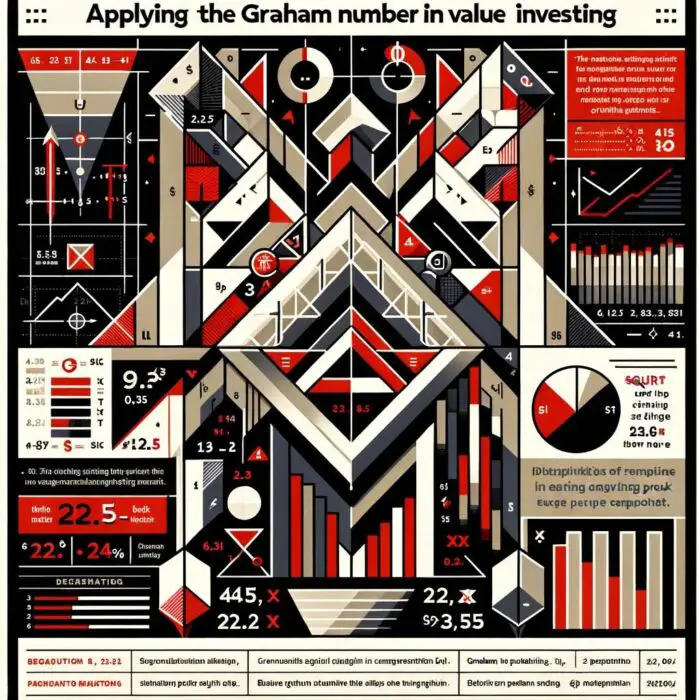
Benjamin Graham as the Father of Value Investing
Benjamin Graham, often recognized as the father of value investing, has left an indelible imprint on the world of finance. As an economist and professional investor, Graham devoted much of his life to developing rigorous, systematic approaches for investing in the stock market. His principles of investing safely and profitably have shaped the practices of many investment professionals, including Warren Buffet, who studied under him at Columbia University.
One of the significant contributions of Graham to the realm of value investing is the concept of the “Graham Number.” This metric is a straightforward yet powerful tool that helps investors identify potentially undervalued stocks based on their earnings and book value. The Graham Number is derived from his belief in the power of fundamental, intrinsic value investing and his desire to develop a rule of thumb for buying stocks at a fair price.
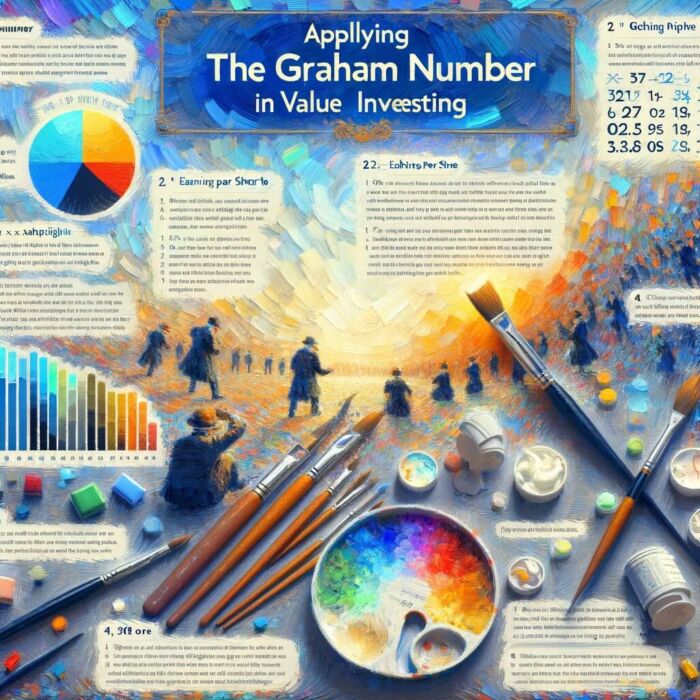
Overview of the Graham Number
The Graham Number is essentially a conservative estimate of a stock’s fair value, providing a benchmark against which current market prices can be compared. By calculating and applying the Graham Number, investors can gain insight into whether a company is potentially overvalued or undervalued, thus informing their investment decisions.
The formula itself is quite simple: the Graham Number is calculated as the square root of 22.5 times the earnings per share (EPS) times the book value per share (BVPS). But why 22.5? This figure is the product of Graham’s recommended price-to-earnings ratio (15) and price-to-book ratio (1.5). The number 15 was considered the upper limit of the price-to-earnings ratio, and 1.5 was the maximum price-to-book ratio, thus combining to form the multiplier in the Graham Number calculation.
In the following sections, we’ll delve deeper into the details of the Graham Number, its calculation, practical application, and its significance in the larger context of value investing strategies. However, it’s crucial to note from the onset that while the Graham Number is a powerful tool, it should be used in conjunction with other financial metrics and analysis methods for a holistic understanding of a company’s true value.

Background on the Graham Number
The Graham Number is a central pillar in the edifice of value investing, providing a critical metric for identifying undervalued securities. The main purpose of the Graham Number is to help investors determine whether a stock is undervalued based on two important financial figures: earnings per share (EPS) and book value per share (BVPS). The use of these two variables makes the Graham Number a balanced measure of a company’s earnings capacity and its net asset value, providing a more holistic view of the company’s underlying value.

In mathematical terms, the Graham Number (G) is calculated using the following formula:
G = sqrt (22.5 * EPS * BVPS)
In this formula, the square root indicates the geometric mean, ensuring a balance between the two factors – EPS and BVPS – and not letting any single one dominate. The constant 22.5 is the product of Graham’s recommended maximum price-to-earnings ratio (P/E of 15) and maximum price-to-book ratio (P/B of 1.5), representing a balance between growth and value. This multiplier is derived from Graham’s conservative approach to investing, reflecting his belief that investors should not pay over the odds for any company.
The historical context of the Graham Number lies in the turmoil of the early 20th century financial markets. Born in 1894, Benjamin Graham lived through some of the most volatile periods in financial history, including the 1929 stock market crash and the subsequent Great Depression. His experiences during these times greatly influenced his investment philosophy, leading to an emphasis on safety, thorough analysis, and the identification of a margin of safety in investments.
In this context, the Graham Number emerged as a tool to identify potentially safe investments in turbulent times. Graham advocated for its use as part of a larger framework of analysis, one that considered both a company’s financial strength and its valuation in the market. By using the Graham Number, investors could quickly filter out companies that did not meet the basic criteria for a safe and sound investment.
However, it’s important to note that Graham did not propose the Graham Number as a standalone solution for stock picking. It was, instead, one part of a broader, more comprehensive investing strategy that emphasized the importance of thorough analysis, long-term thinking, and the recognition of the inherent unpredictability of the markets. As we delve deeper into the application and limitations of the Graham Number, we’ll maintain this perspective, viewing it as a useful tool within a broader toolbox of value investing techniques.
source: GrahamValue on YouTube

Principles of Value Investing and the Graham Number
A foundational concept in value investing, and an underpinning of the Graham Number, is the notion of intrinsic value. Intrinsic value refers to the fundamental, true worth of a company, independent of its current market price. The idea is that, at times, the stock market may misprice a company due to various factors such as market sentiment, speculative trading, or economic events. This discrepancy between a company’s intrinsic value and its market price forms the basis for value investing.
Graham viewed intrinsic value from a conservative, long-term investor’s perspective. To him, the intrinsic value was the discounted value of the cash that could be taken out of a business during its remaining life. He believed that, over time, the market would correct any mispricing, aligning a company’s market price with its intrinsic value. This alignment may come about due to changes in market sentiment, improved company performance, or wider economic developments.
In parallel to the concept of intrinsic value is the principle of the margin of safety, another cornerstone of Graham’s investing philosophy. The margin of safety is a principle that advocates buying securities at prices sufficiently below their intrinsic value to allow for a buffer against errors in estimation or unforeseen negative events. The larger the discount to intrinsic value (i.e., the larger the margin of safety), the lower the risk to the investor.
The Graham Number comes into play as a quantitative tool to help identify stocks that potentially offer a margin of safety. It does this by providing a measure of a company’s fair value based on its earnings and book value. If a company’s stock price is lower than its Graham Number, it may indicate that the stock is undervalued and therefore offers a margin of safety.
In this way, the Graham Number is directly tied to both the concept of intrinsic value and the margin of safety principle. It is a tool that assists in the calculation of a company’s intrinsic value and, by comparison with the market price, helps identify the presence (or absence) of a margin of safety. It’s important to remember, however, that it is only one of many tools and methods used in the practice of value investing. A thorough analysis will always incorporate additional metrics and consider the broader context in which a company operates.
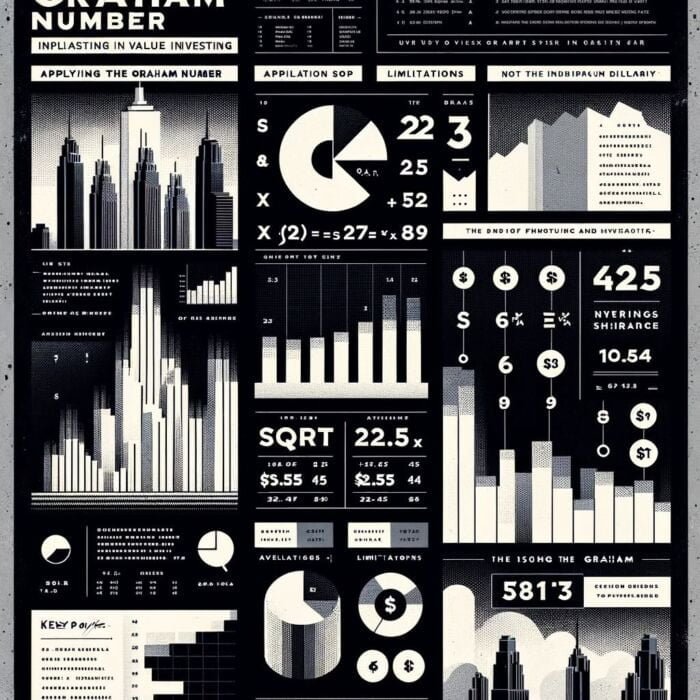
How to Calculate the Graham Number
The process of calculating the Graham Number, though mathematically straightforward, requires a keen understanding of the financial metrics at its core. This calculation involves two critical components of a company’s financials: the Earnings per Share (EPS) and the Book Value per Share (BVPS). Once these values are acquired, the Graham Number can be calculated using the following step-by-step process:
- Identify the company’s EPS and BVPS: These values can typically be found in a company’s income statement and balance sheet, respectively, which are part of its regular financial disclosures. Many financial websites also report these figures for public companies.
- Multiply the EPS by the BVPS: The product of these two figures represents a combination of a company’s earnings capacity and its net assets, offering a balanced view of its financial performance and position.
- Multiply the result by 22.5: This step involves multiplying the above product by 22.5, the constant derived from Graham’s recommended maximum price-to-earnings ratio (P/E of 15) and maximum price-to-book ratio (P/B of 1.5).
- Take the square root of the result: This gives the final Graham Number. The geometric mean is used to ensure a balance between EPS and BVPS and prevent one from disproportionately affecting the result.
The Earnings Per Share (EPS) is a measure of a company’s profitability, calculated by dividing the company’s net income by the number of its outstanding shares. Essentially, EPS tells you how much of a company’s profits (after tax and after paying off preferred stock dividends) each share is entitled to. A higher EPS often indicates strong profitability, but it’s important to compare a company’s EPS with those of other companies in the same industry to get a meaningful picture.
The Book Value per Share (BVPS), on the other hand, is a measure of a company’s net asset value allocated to each share of common stock. It is calculated by subtracting total liabilities from total assets, then dividing the result by the number of outstanding shares. The BVPS gives investors an idea of what a company would be worth if it were to be liquidated today. A higher BVPS may indicate that a company has more assets relative to its liabilities, potentially signaling financial health. However, like EPS, BVPS should also be evaluated in context, taking industry norms and company specifics into account.
While calculating the Graham Number is a straightforward process, interpreting it requires an understanding of the broader context. For instance, a low Graham Number relative to a company’s stock price could indicate that the stock is overvalued, while a high Graham Number could suggest the opposite. However, this doesn’t mean one should make investment decisions based solely on this measure. The Graham Number should be used as part of a comprehensive investment analysis, factoring in other financial metrics, industry trends, and the overall economic environment.
source: Financial Wisdom on YouTube

Practical Application of the Graham Number
Understanding how to interpret and apply the Graham Number in the context of a company’s valuation is paramount for its practical use. In essence, the Graham Number provides an estimate of a company’s fair price based on its earnings and book value. If a company’s stock price is less than its Graham Number, the stock may be undervalued, potentially providing a margin of safety for investors. Conversely, if a company’s stock price is higher than its Graham Number, it may be overvalued, suggesting a higher level of risk.
Let’s illustrate this with a hypothetical example: Company A reports an EPS of $5 and a BVPS of $20. Using the Graham Number formula, we have:
G = sqrt (22.5 * EPS * BVPS) = sqrt (22.5 * $5 * $20) = $33.54
If Company A’s current stock price is $30, it is trading below its Graham Number. According to Graham’s philosophy, this could be seen as an opportunity to buy the stock at a bargain, as it’s priced below its estimated intrinsic value. Conversely, if the stock is trading at $40, it’s trading above its Graham Number, suggesting it may be overpriced relative to its earnings and book value.
While the Graham Number can be a powerful tool, investors need to be aware of its limitations and common pitfalls. First, the Graham Number is a relatively simplistic measure that doesn’t take into account many other factors that can influence a company’s value, such as its growth prospects, competitive positioning, or industry trends. It should therefore be used in conjunction with other valuation metrics and not as a standalone measure.
Second, the Graham Number is derived from two variables, EPS and BVPS, both of which have their own limitations. EPS, for instance, can be influenced by a company’s accounting decisions and does not take into account the cost of capital. BVPS, on the other hand, can be significantly influenced by intangible assets and may not reflect a company’s true economic value, especially in the case of companies in knowledge-intensive industries, such as technology or pharmaceuticals, where intangible assets like intellectual property make up a significant portion of value.
Lastly, the Graham Number assumes that the suitable P/E ratio is 15 and the suitable P/B ratio is 1.5 for all companies, which is an oversimplification. Different industries and different companies have different suitable ratios depending on their business models, growth prospects, and risk levels.
Therefore, while the Graham Number can provide a useful starting point for value investors seeking potential opportunities, it should be used with care, taking its limitations into account. Always remember that a single metric can’t provide a comprehensive view of a company’s financial health or its investment potential. It’s crucial to consider a variety of financial metrics, perform thorough due diligence, and evaluate the company in its industry context to make well-informed investment decisions.
source: FinLadder on YouTube

Graham Number vs. Other Valuation Metrics
In the universe of financial metrics, the Graham Number is a unique entity, designed with a clear philosophy in mind. It represents a valuation technique that balances earnings capacity (EPS) and net assets (BVPS), providing an estimated intrinsic value of a company. But how does it compare with other popular metrics like the Price-to-Earnings (P/E) ratio or the Price-to-Book (P/B) ratio?
The P/E ratio, one of the most frequently used valuation metrics, measures the price investors are willing to pay for each dollar of a company’s earnings. It reflects market sentiment about a company’s future growth prospects. On the other hand, the P/B ratio compares a company’s market price with its book value, offering insight into how much investors are willing to pay for each dollar of a company’s net assets.
One of the key advantages of the Graham Number over these standalone metrics is its dual focus on earnings and book value. While the P/E ratio focuses only on earnings and can be distorted by temporary growth spurts or contractions, and the P/B ratio focuses only on net assets and may ignore a company’s profitability, the Graham Number takes both into account, potentially offering a more balanced view of a company’s value.
However, the Graham Number also has its limitations compared to these metrics. The P/E ratio and P/B ratio can be calculated for all companies with positive earnings and positive book value, respectively, and can be directly compared across companies. The Graham Number, however, can only be used to compare companies within the same industry, since it is derived from industry-specific EPS and BVPS.
Furthermore, these metrics can provide more nuanced information when used separately. The P/E ratio, for instance, can signal whether a company’s stock is overpriced or underpriced relative to its earnings growth, and the P/B ratio can give insights into whether a company’s assets are overvalued or undervalued by the market. The Graham Number, being a composite of these two metrics, may not provide this level of granularity.
When to use the Graham Number in value investing is largely dependent on the investor’s philosophy and the nature of the companies being evaluated. The Graham Number may be most beneficial when evaluating companies in industries where both earnings and book value are crucial to valuation, and where a conservative, long-term investment approach is desired. This often applies to companies in industries such as manufacturing, utilities, and other sectors with tangible assets and stable earnings. However, it may be less suitable for companies in high-growth industries or those with significant intangible assets, such as technology or pharmaceutical firms.
As always, it’s essential to remember that no single financial metric can provide a complete view of a company’s financial health or its potential as an investment. A well-rounded investment analysis should involve a range of metrics, a thorough understanding of the company and its industry, and a careful consideration of the broader market and economic conditions.
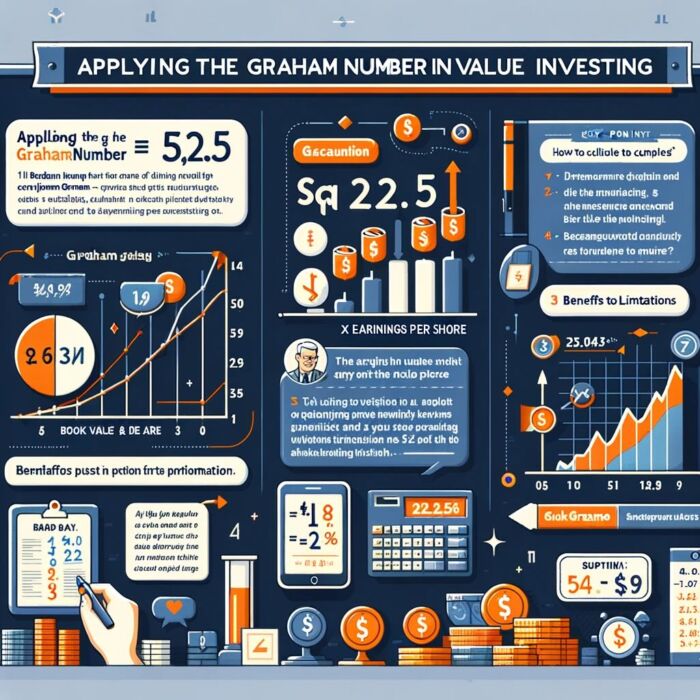
Limitations of the Graham Number
Like any financial metric, the Graham Number has its limitations. Understanding these limitations is critical for properly applying the Graham Number and interpreting its results.
One limitation pertains to the nature of the industries or sectors to which it is applied. The Graham Number is particularly relevant for companies with tangible assets and steady earnings, such as those in the manufacturing, utilities, or finance sectors. However, its effectiveness may be limited when evaluating companies in high-growth industries, such as technology or biotech, which often have high P/E ratios reflecting their growth potential. Similarly, it may not be as applicable for companies with significant intangible assets, such as software companies, where a large portion of value is derived from intellectual property rather than tangible book value.
Another limitation comes from changes in financial accounting. The Graham Number depends heavily on EPS and BVPS, both of which can be influenced by accounting decisions. For instance, companies can manage earnings through accounting policies, and this may affect the EPS. Similarly, BVPS may not fully capture a company’s value in today’s economy where intangible assets, not recorded on the balance sheet, play a significant role. For example, a software company may have a low book value because most of its value lies in its intellectual property or human capital, neither of which are represented in traditional accounting figures.
A third limitation is that the world has changed significantly since Benjamin Graham’s era, and some of his principles may not hold in the modern economy. Today’s stock market is far more dynamic and complex, with a much wider array of financial products and investment strategies. Moreover, the advent of computerized trading and the ease of access to financial information have made markets more efficient, potentially reducing the prevalence of severely underpriced or overpriced stocks. In today’s markets, value investing using the Graham Number might be more challenging, as the number of stocks that meet Graham’s criteria may be fewer.
Lastly, the Graham Number uses a fixed multiplier of 22.5, which assumes a P/E ratio of 15 and a P/B ratio of 1.5. This may not always be suitable for every company or industry, as different industries and companies might have different average P/E and P/B ratios depending on their growth prospects, risk levels, and other factors.
While the Graham Number can be a helpful tool in value investing, it should not be used in isolation. It’s crucial to consider other financial metrics and qualitative factors, and to be aware of the changing dynamics of the modern economy. Always remember that investing involves risks and it’s important to do thorough due diligence before making investment decisions.

Advanced Concepts Related to the Graham Number
While the Graham Number can be a foundational tool in value investing, it can be beneficial to supplement it with more advanced financial metrics and concepts. Two such concepts are the Price/Earnings to Growth (PEG) ratio and the Return on Invested Capital (ROIC).
The PEG ratio is a valuation metric that adjusts the P/E ratio by the growth rate of a company’s earnings. This ratio can provide a more nuanced view of a company’s valuation by factoring in its growth prospects. It is calculated by dividing the P/E ratio by the annual EPS growth rate. A PEG ratio less than 1 might indicate that a stock is undervalued given its earnings growth, while a PEG ratio greater than 1 might suggest overvaluation.
Comparatively, the Graham Number doesn’t explicitly consider growth prospects. Instead, it gives an estimated intrinsic value based on a company’s earnings and book value. While this can provide a robust measure for stable, mature companies, the PEG ratio can add an extra layer of depth by considering a company’s future earnings growth, which could be particularly beneficial when evaluating high-growth companies.
The Return on Invested Capital (ROIC) is another insightful metric that measures how effectively a company generates returns from its invested capital. ROIC is calculated by dividing net operating profit after taxes by the total invested capital. A higher ROIC might indicate that a company is effectively using its capital to generate profits, which could be a positive sign for investors.
Unlike the Graham Number, which focuses more on a company’s current financial status, ROIC offers insights into a company’s operational efficiency and its ability to generate returns from its investments. While the Graham Number can help identify potentially undervalued companies, ROIC can help assess the quality of the company’s earnings and its long-term investment potential.
While the PEG ratio and ROIC introduce additional layers of complexity and nuance to the valuation process, they can complement the use of the Graham Number in a value investing strategy. By considering a company’s growth prospects with the PEG ratio and its operational efficiency with the ROIC, investors can get a more comprehensive view of a company’s financial health and future prospects. As with the Graham Number, these metrics should not be used in isolation but as part of a broader investment analysis. It’s also essential to adapt the metrics to the specific context of the company and the industry in which it operates.

Case Studies on Successful Application of the Graham Number
Examining the application of the Graham Number in real-world scenarios can provide critical insights into its utility and practicality. Some successful investors have effectively used this metric, including Warren Buffet, a well-known disciple of Benjamin Graham. Here, we’ll explore a couple of case studies that demonstrate the successful application of the Graham Number.
One well-documented example of an investor influenced by the teachings of Benjamin Graham is Warren Buffet. His investment in American Express in the mid-1960s provides an excellent case study. After the “salad oil scandal,” which resulted in significant financial losses for American Express, its stock price plummeted, making it a potential candidate for a value investment. At that time, American Express’s EPS and BVPS had also fallen, reducing its Graham Number. However, Buffet, seeing that the intrinsic business value of the company was still strong, bought a significant stake in the company. His decision was validated in the following years as American Express managed to bounce back and provide significant returns, demonstrating the value of a Graham-inspired approach, which emphasizes the importance of the company’s intrinsic value.
Another investor inspired by Benjamin Graham is Walter Schloss, who had a remarkable track record of beating the market over his investing career. Schloss strictly adhered to the principles of the Graham Number and consistently sought companies trading below their intrinsic value as determined by the Graham formula. One of his notable successes was his investment in the Chrysler Corporation in the late 1970s. After the company faced financial difficulties and its stock price fell dramatically, Schloss, following Graham’s principles, recognized the discrepancy between the stock price and the intrinsic value and invested heavily. His faith in the principles was rewarded when the company recovered in the following years, yielding significant profits for his fund.
These case studies illustrate important lessons about using the Graham Number in investing. First, they underscore the fundamental principle of value investing: buying securities at prices below their intrinsic value provides a margin of safety and a potential for significant returns. Second, they highlight the importance of understanding the company’s business and industry. Although both American Express and Chrysler were facing temporary problems that negatively impacted their EPS and BVPS (thus lowering their Graham Numbers), Buffet and Schloss recognized that the companies’ intrinsic values remained intact, enabling them to make successful investments. Finally, these cases remind us that patience is critical in value investing. In both cases, the investors had to wait several years before their investments bore fruit, underscoring the long-term nature of this investment strategy.
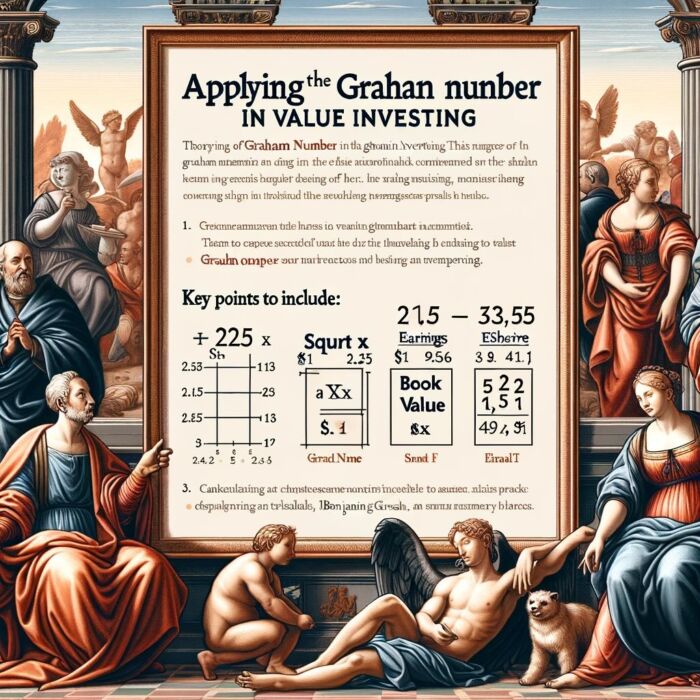
The Graham Number and Portfolio Diversification
In addition to individual stock analysis, the Graham Number can also be instrumental in building and managing a diversified investment portfolio. This section delves into how this simple yet powerful metric can guide portfolio diversification, balance risk and reward, and integrate with other portfolio management methods.
The Graham Number, by providing a conservative estimate of a company’s intrinsic value, can serve as a guide for portfolio diversification. It enables investors to identify potentially undervalued stocks across different sectors and industries. This can help in achieving portfolio diversification, a fundamental principle of risk management, by spreading investments across a variety of companies and sectors.
By using the Graham Number, investors can select a mix of companies that seem undervalued according to this criterion, thereby potentially enhancing the return potential while reducing the risk associated with over-concentration in any single stock or sector. Furthermore, by identifying undervalued stocks, the Graham Number inherently provides a ‘margin of safety’, which is another important concept in managing risk. Investing in stocks when their market price is below the calculated Graham Number could offer a buffer against potential price declines.
However, while the Graham Number can be an effective tool in guiding diversification and managing risk, it should not be the sole criterion for portfolio construction. It is also critical to consider other factors such as the company’s growth prospects, the quality of its management, the health of its balance sheet, and the broader economic and market conditions.
Strategically integrating the Graham Number with other portfolio management methods can result in a robust and well-rounded investment strategy. For example, the Graham Number can be used in conjunction with modern portfolio theory (MPT), which emphasizes the importance of portfolio diversification and the relationship between risk and return. While MPT uses statistical measures like correlation and variance to construct an optimal portfolio, the Graham Number can supplement this by identifying undervalued stocks that could enhance the portfolio’s return potential.
Similarly, the Graham Number can be combined with fundamental analysis methods, where the Graham Number is used to identify potentially undervalued stocks, which are then subjected to a more detailed analysis of their financial health and future prospects.
The Graham Number can be a valuable tool in portfolio management, guiding diversification, balancing risk and reward, and integrating with other investment methods. However, like any tool, it must be used judiciously and in the context of a broader, comprehensive investment strategy. Always remember that all investment strategies and tools come with risks and require proper understanding and application.

The Role of the Graham Number in Modern Algorithmic Trading
As technology continues to transform the finance industry, the use of algorithmic trading and robo-advisors has grown exponentially. These automated tools can use various financial metrics, including the Graham Number, to make investment decisions. This section explores the incorporation of the Graham Number into algorithmic trading models and discusses the potential benefits and drawbacks of this approach.
Algorithmic trading, also known as algo-trading or black-box trading, involves the use of computer algorithms to execute trades at high speeds based on pre-set criteria. These criteria can be based on various factors, including price, volume, market conditions, and many more. Robo-advisors, a subset of algorithmic trading, are digital platforms that provide automated, algorithm-driven financial planning services with little to no human supervision.
The Graham Number can be incorporated into algorithmic trading models as one of the key criteria for selecting investments. An algorithm could be programmed to scan the market for stocks whose current price is lower than their Graham Number, indicating potential undervaluation. These stocks could then be selected for investment, either individually or as part of a diversified portfolio.
Automated trading using the Graham Number has several potential benefits. First, it can provide a systematic and emotion-free approach to investing, reducing the risk of human error and bias. Second, it can scan the entire market quickly and efficiently, identifying potential investment opportunities that might be missed by human investors. Third, it can execute trades at high speed, allowing investors to capitalize on short-term market inefficiencies.
However, there are also potential drawbacks to automated trading using the Graham Number. One significant concern is that it might overly simplify the investment process. While the Graham Number can be a useful tool for identifying potentially undervalued stocks, it is not infallible and should not be used in isolation. An algorithm that relies solely on the Graham Number might overlook other critical factors, such as a company’s growth prospects, the quality of its management, or broader market conditions.
Furthermore, like all automated trading systems, those incorporating the Graham Number are subject to the risk of mechanical failures, system glitches, and inaccurate data. Algorithms are only as good as the data they’re given, and any inaccuracies or omissions in the data could lead to flawed investment decisions.
While the Graham Number can play a valuable role in modern algorithmic trading, it must be used wisely and as part of a broader, multi-faceted investment strategy. As with any investment approach, it is critical to understand the underlying principles and potential risks, and to continually monitor and adjust the strategy as market conditions change.
source: Investing Book Summaries on YouTube

Conclusion: Graham Number
In the journey through the world of value investing, the Graham Number emerges as a central navigational tool. Its significance, emanating from the teachings of Benjamin Graham, the father of value investing, has been reiterated throughout this discourse. As an equation that captures the essence of Graham’s philosophy, the Graham Number embodies the principle of purchasing securities at a price less than their intrinsic value, thereby providing a margin of safety.
This valuable measure bridges the gap between a company’s earnings and book value, facilitating an investor’s quest to identify potentially undervalued stocks. As we’ve explored, the Graham Number can guide investment decisions, shape a diversified portfolio, and even be integrated into modern algorithmic trading models. Its influence has been demonstrated in case studies of successful investors like Warren Buffet and Walter Schloss, who’ve relied on this principle as part of their broader investing strategies.
However, while the Graham Number offers a solid foundation, it should not be viewed as a standalone metric. Value investing, in essence, goes beyond numbers and demands a thorough understanding of a company’s business, its competitive landscape, and its future prospects. The Graham Number should thus serve as a starting point, stimulating further analysis and research rather than dictating unequivocal decisions. It’s vital for investors to pair this metric with a comprehensive review of a company’s financial health, operational efficiency, management quality, and growth potential.
Furthermore, it’s important to appreciate the limitations of the Graham Number. As noted, this metric may not be suitable for all sectors or companies, particularly in today’s increasingly complex and dynamic market environment. Therefore, investors should exercise caution and judgement in its application, tailoring their use of the Graham Number to the specific context and the nature of the company being evaluated.
Ultimately, the exploration of the Graham Number encourages a deeper dive into Graham’s teachings and the broader philosophy of value investing. This investment strategy, grounded in rigorous analysis and a long-term perspective, demands continuous learning and adaptation. Graham’s teachings, while timeless, are not infallible, and the true value investor continually seeks to refine their understanding, grow their knowledge, and adapt their strategy to the changing market landscape.
The power of the Graham Number, therefore, lies not only in its mathematical simplicity but also in the broader principles it embodies. As an investor, it offers an invaluable tool in your arsenal but remember to wield it wisely and in concert with a range of other tools and insights. So, let this be a springboard for further study into the fascinating and rewarding realm of value investing.

Further Reading
The exploration of the Graham Number and the larger landscape of value investing are never-ending journeys. To further deepen your understanding and application of these principles, here’s a curated list of insightful books, articles, online resources, and tools that would make for enriching further reading and study.
Books and Articles:
- “The Intelligent Investor” by Benjamin Graham: This seminal work by Graham himself is a must-read for any value investor. The book elucidates Graham’s investment philosophy and introduces many of the principles that are still revered today.
- “Security Analysis” by Benjamin Graham and David Dodd: Another classic by Graham and his colleague, this book delves deeper into the art of evaluating securities and is considered the bible of value investing.
- “Value Investing: From Graham to Buffett and Beyond” by Bruce Greenwald: This book extends Graham’s principles, illustrating how modern investors like Warren Buffett have adapted them to contemporary markets.
- “The Little Book of Valuation: How to Value a Company, Pick a Stock and Profit” by Aswath Damodaran: While not focused solely on the Graham Number, this book provides an accessible introduction to the complex world of stock valuation.
- Numerous scholarly and industry articles discussing the Graham Number can be found in finance and investment journals. Some examples include “Benjamin Graham and the Power of Growth Stocks” by Frederick Martin and “Value Investing: The Use of Historical Financial Statement Information to Separate Winners from Losers” by Joseph Piotroski.
Online Resources and Tools:
- Investopedia: This website provides a wealth of information on the Graham Number and many other investment concepts and strategies. It’s an excellent resource for both beginners and experienced investors.
- Morningstar: This investment research platform offers extensive financial data on thousands of stocks and can be used to calculate the Graham Number.
- Yahoo Finance or Google Finance: Both platforms offer comprehensive financial data that can help in calculating the Graham Number and conducting additional research.
- Gurufocus: This site offers a stock screener that allows you to filter stocks based on the Graham Number and various other criteria.
- Seeking Alpha: This platform provides in-depth analysis and discussion on a wide range of stocks, often incorporating value investing principles such as the Graham Number.
In your quest for knowledge, always remember the essence of value investing: the pursuit of understanding a company’s true value. This endeavor calls for patience, discipline, and continual learning. As you delve deeper into the vast and intriguing world of value investing, the resources above should prove invaluable in shaping your understanding and honing your investment acumen.
Important Information
Comprehensive Investment Disclaimer:
All content provided on this website (including but not limited to portfolio ideas, fund analyses, investment strategies, commentary on market conditions, and discussions regarding leverage) is strictly for educational, informational, and illustrative purposes only. The information does not constitute financial, investment, tax, accounting, or legal advice. Opinions, strategies, and ideas presented herein represent personal perspectives, are based on independent research and publicly available information, and do not necessarily reflect the views or official positions of any third-party organizations, institutions, or affiliates.
Investing in financial markets inherently carries substantial risks, including but not limited to market volatility, economic uncertainties, geopolitical developments, and liquidity risks. You must be fully aware that there is always the potential for partial or total loss of your principal investment. Additionally, the use of leverage or leveraged financial products significantly increases risk exposure by amplifying both potential gains and potential losses, and thus is not appropriate or advisable for all investors. Using leverage may result in losing more than your initial invested capital, incurring margin calls, experiencing substantial interest costs, or suffering severe financial distress.
Past performance indicators, including historical data, backtesting results, and hypothetical scenarios, should never be viewed as guarantees or reliable predictions of future performance. Any examples provided are purely hypothetical and intended only for illustration purposes. Performance benchmarks, such as market indexes mentioned on this site, are theoretical and are not directly investable. While diligent efforts are made to provide accurate and current information, “Picture Perfect Portfolios” does not warrant, represent, or guarantee the accuracy, completeness, or timeliness of any information provided. Errors, inaccuracies, or outdated information may exist.
Users of this website are strongly encouraged to independently verify all information, conduct comprehensive research and due diligence, and engage with qualified financial, investment, tax, or legal professionals before making any investment or financial decisions. The responsibility for making informed investment decisions rests entirely with the individual. “Picture Perfect Portfolios” explicitly disclaims all liability for any direct, indirect, incidental, special, consequential, or other losses or damages incurred, financial or otherwise, arising out of reliance upon, or use of, any content or information presented on this website.
By accessing, reading, and utilizing the content on this website, you expressly acknowledge, understand, accept, and agree to abide by these terms and conditions. Please consult the full and detailed disclaimer available elsewhere on this website for further clarification and additional important disclosures. Read the complete disclaimer here.





